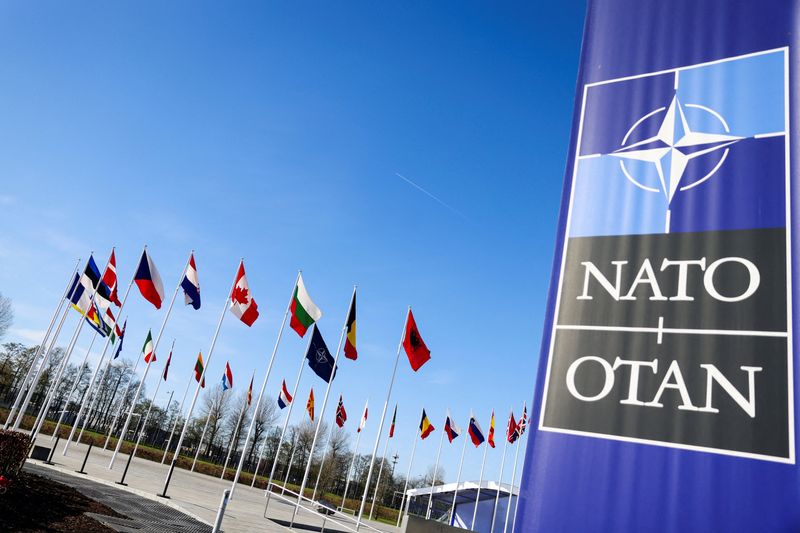Exclusive-NATO will need 35-50 extra brigades under new defence plans, source says
2024.07.08 02:13
By Sabine Siebold
WASHINGTON (Reuters) – NATO will need between 35 and 50 extra brigades to fully realise its new plans to defend against an attack from Russia, a military source told Reuters.
The source, speaking on condition of anonymity, declined to provide any more detail about the plans, which are secret. A brigade consists of between 3,000 and 7,000 troops, so generating 35 to 50 more such units would present a significant challenge.
In another sign of the scale of NATO’s challenge as it revamps its posture to take the threat of a Russian attack more seriously following the 2022 invasion of Ukraine, a security source said Germany alone would have to quadruple its air defence capacities.
At a summit in Vilnius last year, NATO leaders agreed on the alliance’s first major defence plans in more than three decades, and officials have been working on translating the documents into concrete military demands since then.
NATO leaders are expected to get an update on the plans in Washington this week, at a summit to mark the 75th anniversary of the transatlantic security alliance.
Asked for comment, a NATO official said the alliance’s military planners had identified “detailed requirements for troops and weapons needed to defend the alliance”.
“Air and missile defences, long-range weapons, logistics as well as large land manoeuvre formations are among our top priorities,” the official added.
“NATO will likely set more demanding capability targets for allies, as we develop forces that can implement our plans and meet the threats we face. We are confident that our deterrence is and will remain strong.”
The defence ministry in Berlin declined to comment on NATO’s future plans as they are classified. It said all allies were called upon to coordinate with NATO on capability requirements, and that these efforts would stretch into the next year.
ADDITIONAL PERSONNEL
It is unclear from where NATO allies might draw the additional personnel for 35 to 50 brigades. Troops could be shifted from other parts of the armed forces, additional soldiers could be recruited, or NATO members could opt for a mix of both approaches.
Air defence is another major shortfall that NATO military planners have identified, as the war in Ukraine has demonstrated the importance of these systems to protect critical military and civilian infrastructure.
Such systems would be particularly important for Germany as a major logistics hub and staging area in any potential conflict with Russia.
Germany had 36 Patriot air defence units when it was NATO’s frontline state during the Cold War and even then it relied on additional support from NATO allies.
Today, German forces are down to nine Patriot units, after donating three to Ukraine since the Russian invasion in 2022, and the government has started placing orders for Patriot and other air defence systems to boost inventories.
Ground-based air defence systems such as Raytheon (NYSE:)’s Patriot are built to intercept incoming missiles.
After the Cold War, many NATO allies scaled down the number of air defence units to reflect the assessment that they would in future only have to deal with a limited missile threat, coming from countries such as Iran.

This perception changed drastically with Russia’s invasion of Ukraine, which sent NATO allies scrambling to increase stocks of ammunition and tackle air defence system shortfalls.
The agreement on the first major defence plans since the Cold War, dubbed “regional plans” by NATO, signified a fundamental shift for the Western military alliance, which had seen no need to draw up new large-scale defence plans for decades as it believed post-Soviet Russia no longer posed an existential threat.








